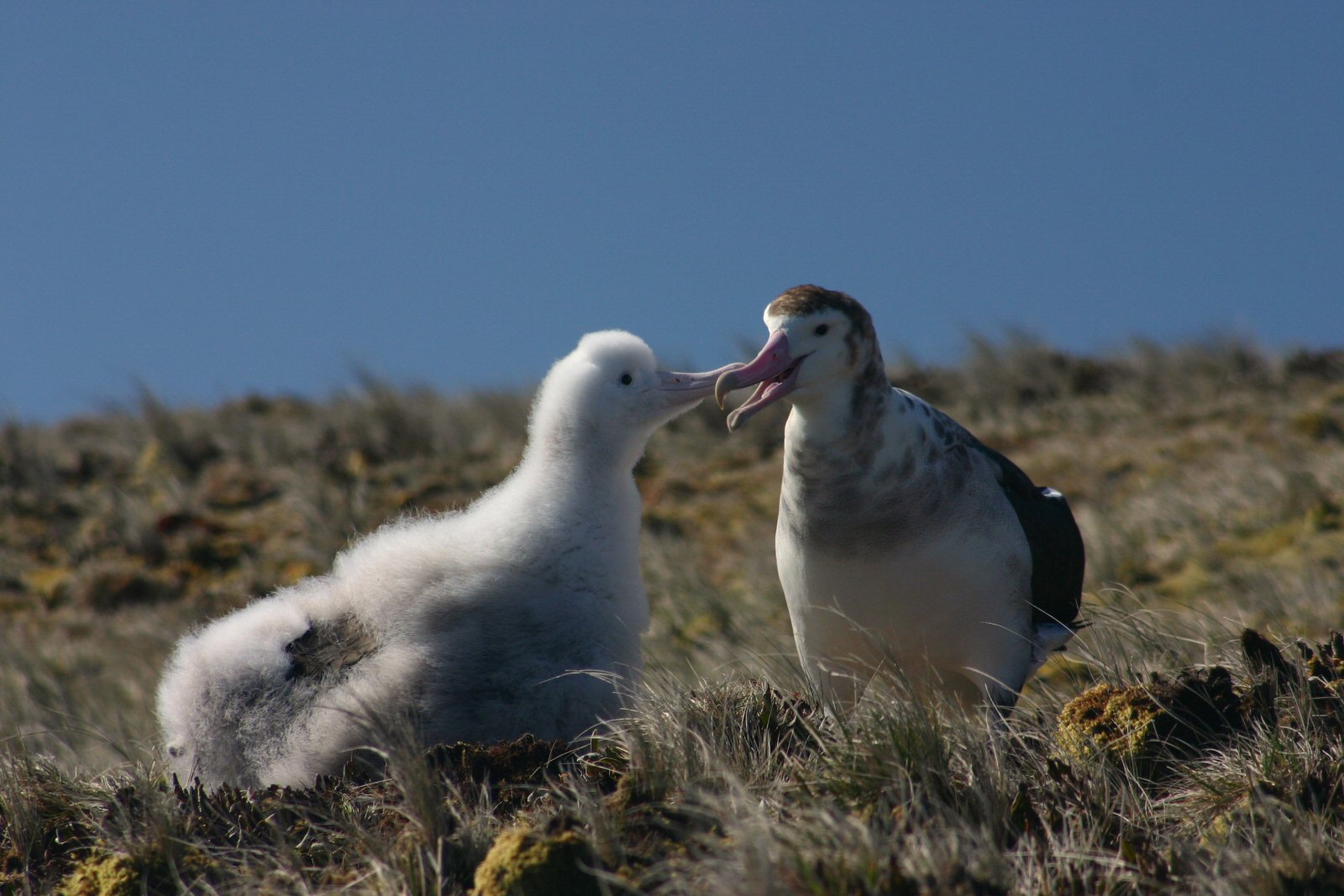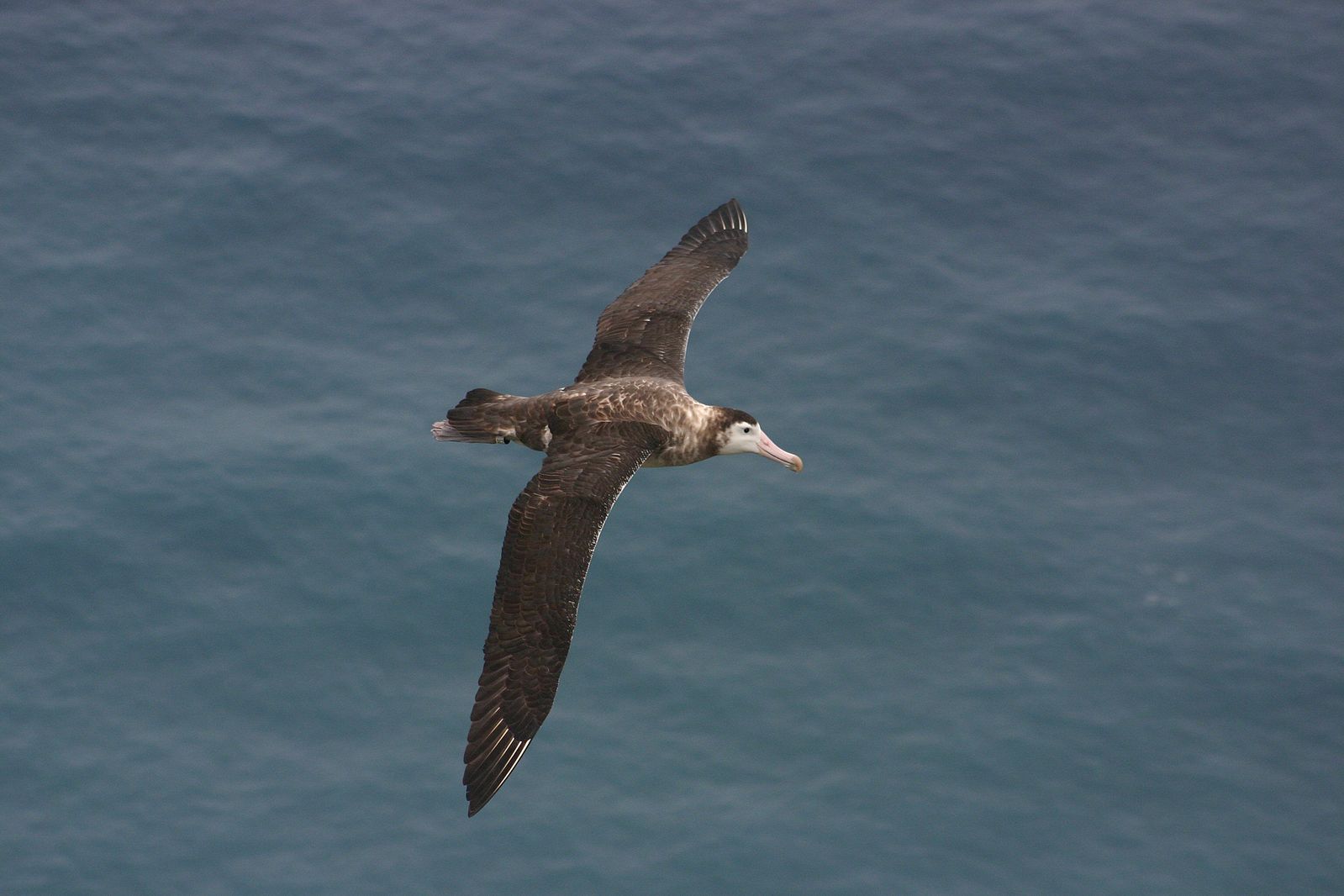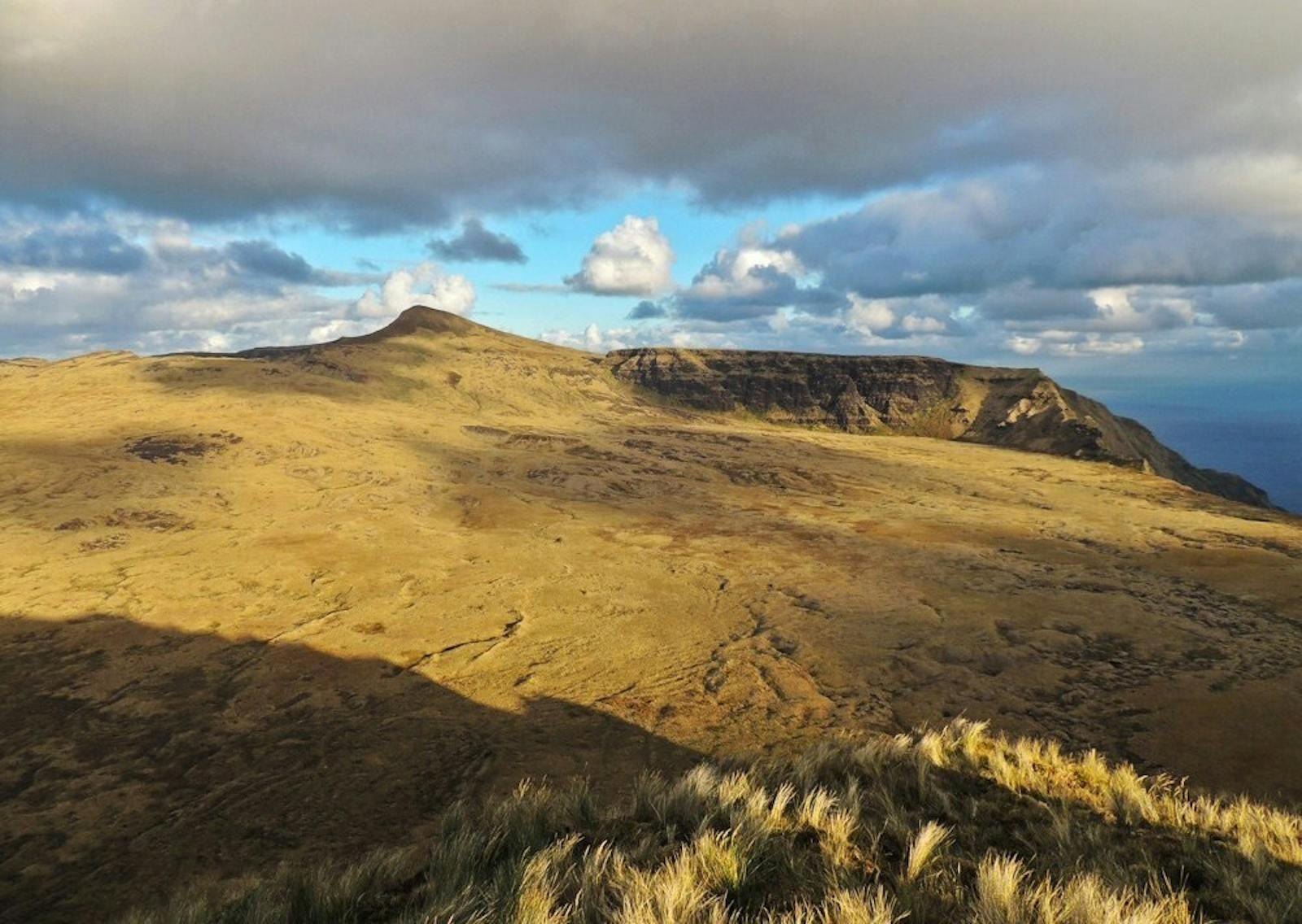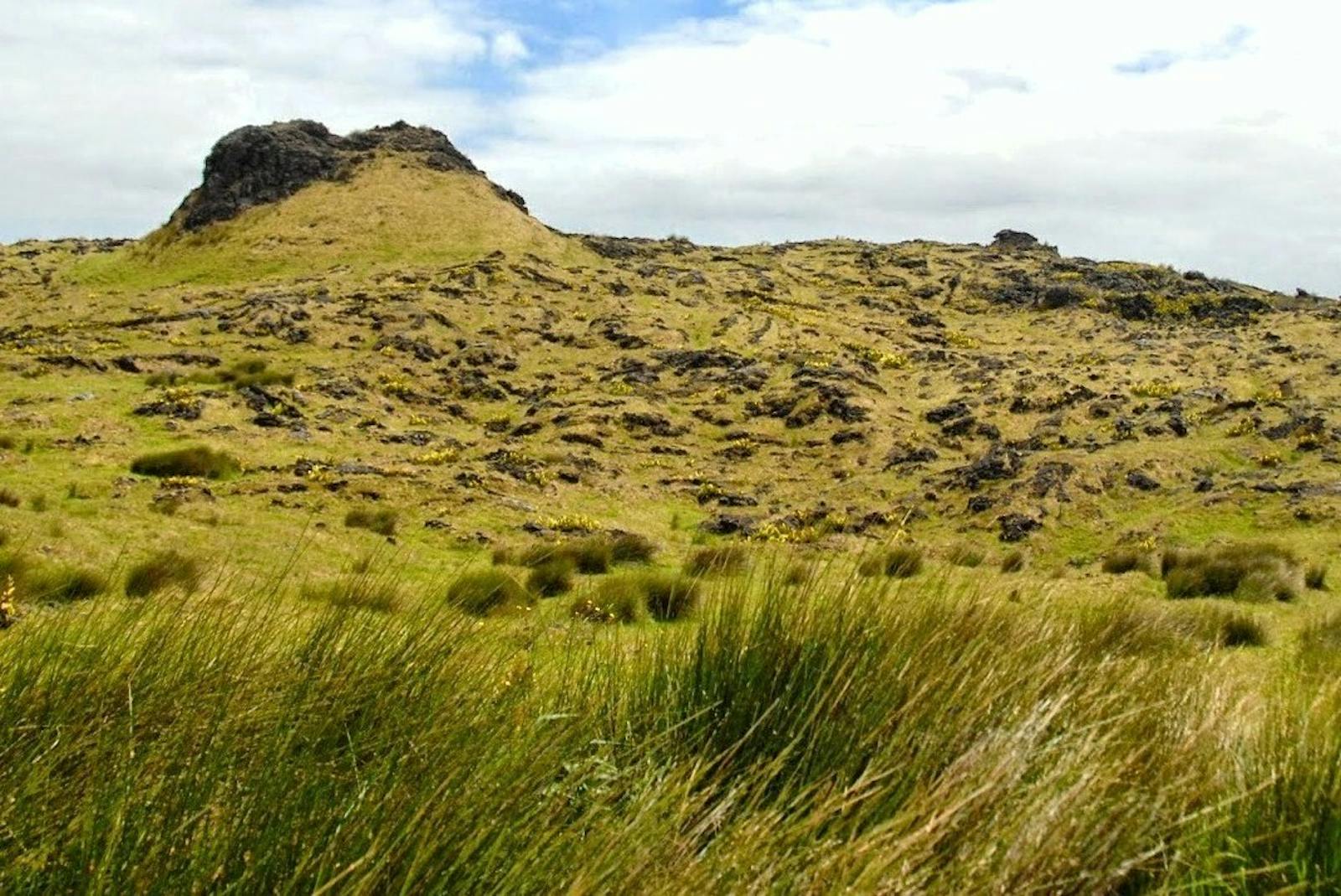Amsterdam-Saint Paul Islands Temperate Grasslands
The ecoregion’s land area is provided in units of 1,000 hectares. The protection goal is the Global Safety Net (GSN1) area for the given ecoregion. The protection level indicates the percentage of the GSN goal that is currently protected on a scale of 0-10.
Bioregion: Amsterdam-Saint Paul Islands (AT3)
Realm: Afrotropics
Ecoregion Size (1000 ha):
7
Ecoregion ID:
67
Conservation Target:
99%
Protection Level:
10
States: French territory
The endemic Amsterdam albatross is one of the world’s rarest species of avifauna, found only on Amsterdam Island; this remnant population is restricted to the upland Peat Bog plateau, approximately 600 meters high, and has only 30 pairs breeding in any single year. Individuals breed every other year, and the entire population is estimated at 160–170 individuals, of which only 80–90 are mature. Thus, this species is considered to be under serious threat of extinction and is considered critically endangered.
Amsterdam and Saint-Paul are Subantarctic volcanic islands in the southern Indian Ocean, located approximately 80 km from each other. Among the most remote islands in the world, Amsterdam and Saint-Paul are more than 3,000 km from any continent, situated between Antarctica, Africa, and Australia. Amsterdam is an island of about 55 km2, with an extinct volcano reaching 911 m altitude. The island is relatively recent, having formed between 400,000 and 200,000 years ago.
Saint-Paul is a much smaller island, only 7 km2, and reaching an altitude of 272 m. Saint-Paul’s volcanic crater is striking; it is flooded and open to the sea on one side, creating an enclosed harbor with cliffs rising vertically from the water. Approximately 500 km north of the Antarctic convergence, Amsterdam and Saint-Paul have a moderate oceanic climate.
Surface seawater temperature varies from 12.7° in August to 17.4°C in February. Air temperatures vary from 11.2° in August to 17°C in February, with an annual average of 13.5°C. Precipitation is high, with an annual average of 1,114 mm, falling primarily as rain. Hail or snow is observed in winter but seldom at low altitudes.

The flagship species of the Amsterdam-Saint Paul Islands Temperate Grasslands ecoregion is the Amsterdam albatross (Diomedea amsterdamensis). Image credit: Vincent Legendre, CC by SA 3.0
Amsterdam and Saint-Paul Islands are typical of many isolated island ecosystems, in that there is a paucity of species in conjunction with a high rate of endemism. The original high endemism of Amsterdam and Saint-Paul Islands’ avifauna was likely a result of its unique biogeographical position. Not only are the islands very isolated, they also have the added factor of being located near sub-Antarctic islands, but in subtropical waters.
Species likely emigrated from the colder islands, and then underwent speciation adapting to the markedly different environment of warmer waters. Amsterdam Island is the only French sub-Antartic isle that supports a native tree, Phylica nitida. In the Rhamnaceae family, this tree has small, narrow leaves and honey-scented yellow flowers, reaches 6–7 m.
At least four endemic birds are thought to have become extinct since the beginning of human interference on the islands, for example the Amsterdam duck. There are currently only 10 or 11 breeding seabird species, of which 4 are extremely rare. One of the most abundant species on the islands is the yellow-nose albatross.
Other residents of the island are sooty albatross, remnant populations of soft-plumaged petrel and grey petrel, Antarctic tern, brown skua, and common waxbill. Another resident of this island group is the rockhopper penguin which performs large scale movements during winter over deep oceanic waters of the Southern Indian Ocean (2,100 km) without any return to land.
Amsterdam Island is the most degraded of the French southern island territories. Erosion naturally followed destruction of the forest, eliminating significant habitat for the burrowing petrel species. Invasive plants have also changed the landscape significantly. Lowland meadow now covers most of the area that was once thick with native Phylica forest. The residual area of Phylica trees stretches along the island’s eastern slope between the "Grand Bois" (large forest) and the "Chaudron" (the cauldron). The island is protected under the National Nature reserve of French Southern Territories which is a Ramsar site covering 22,700 km2.

Amsterdam albatross (Diomedea amsterdamensis) adult in flight, showing dark plumage typical of the species. Image credit: Vincent Legendre, CC by SA 3.0
Industrial fishing activities, including bycatch of seabirds, as well as degradation of marine environments through pollution are major threats to the seabirds of this ecoregion. Longline fisheries are largely responsible for historical and current reduction in many albatrosses and petrel populations as they are attracted by baited hooks and drown when the lines sink.
Outbreaks of the diseases, swine erysipelas and avian cholera, threaten yellow-nosed albatross and sooty albatross. Amsterdam albatross are at risk of contracting the disease due to their close proximity to the yellow-nosed albatross colony. Feral cattle were previously the main threat to indigenous species; however, in 2010 they were completely eradicated.
Priority conservation actions for the next decade
- Promote the application of best methods to mitigate bycatch in all areas used by Amsterdam albatrosses
- Maintain long-term monitoring of seabird populations in order to understand indicators of population change
- Improve knowledge on the presence of pathogens or associated anti-bodies in seabirds.
-
-
1. WWF. 2018. South Indian Ocean – Amsterdam and Saint Paul Islands. [Online]. [Accessed 19 April 2018]. Available from: https://www.worldwildlife.org/ecoregions/at0802
2. The French Southern and Antarctic Lands (TAAF). 2011. Taking action for The Amsterdam albatross: A synopsis of the national plan of actions 2011-2015. [Online]. [Accessed 8 May 2018]. Available from: http://www.taaf.fr/IMG/pdf/brochure_pna-eng_web.pdf
3. Delord, K., Barbraud, C., Bost, C.A., Cherel, Y., Guinet, C. and Weimerskirch, H. 2014. Atlas of top predators from French Southern Territories in the Southern Indian Ocean (Doctoral dissertation, CNRS). [Online]. [Accessed 8 May 2018]. Available from: http://www.cebc.cnrs.fr/ecomm/Fr_ecomm/ecomm_ecor_OI1.html. <hal-01312469>
4. Rozzi, R. and Lomolino, M.V. 2017. Rapid Dwarfing of an Insular Mammal–The Feral Cattle of Amsterdam Island. Scientific reports. 7(1), p.8820. -
Cite this page: Amsterdam-Saint Paul Islands Temperate Grasslands. Ecoregion Snapshots: Descriptive Abstracts of the Terrestrial Ecoregions of the World, 2021. Developed by One Earth and RESOLVE. https://www.oneearth.org/ecoregions/amsterdam-saint-paul-islands-temperate-grasslands/
-





